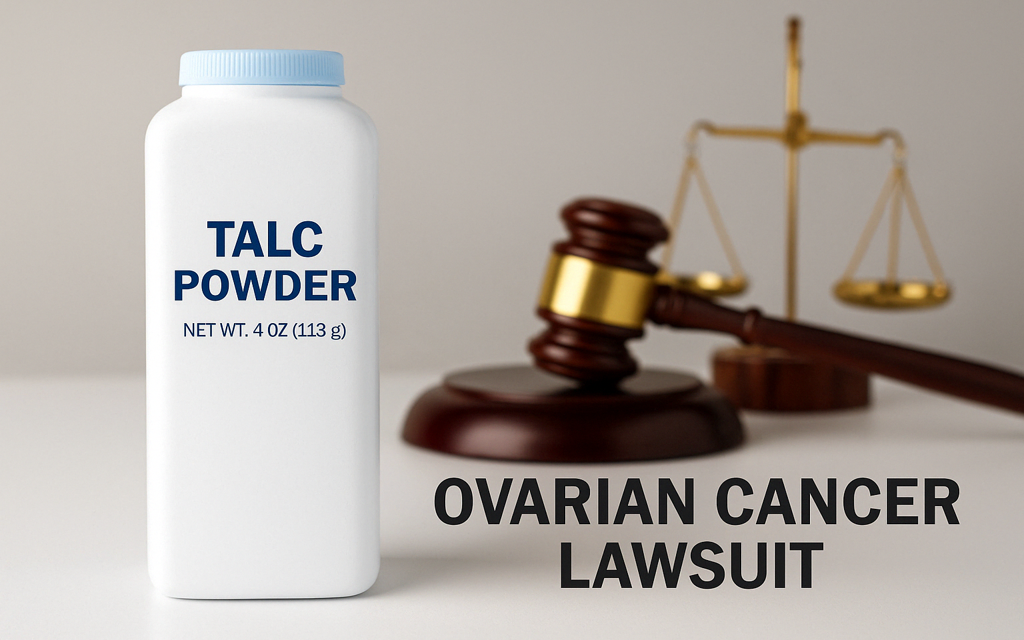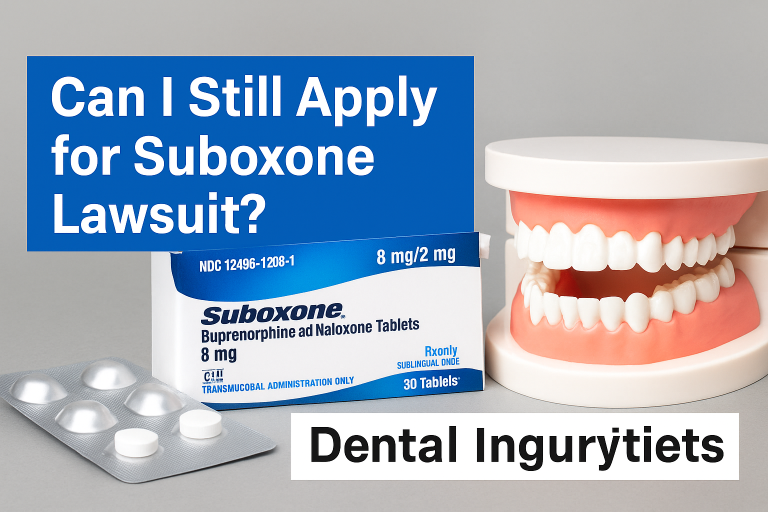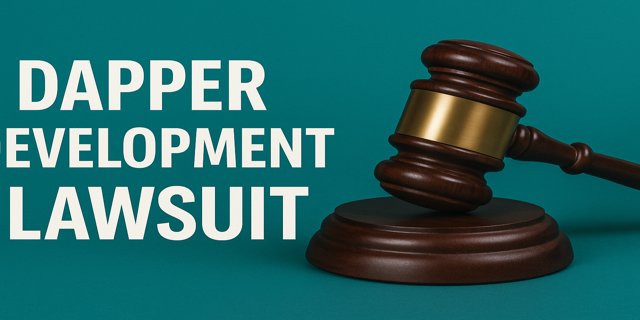The Talc Powder Ovarian Cancer Lawsuit rocked the personal care world. Millions trusted talcum powder to be safe, and many used it daily for decades. Now, they feel misled and exposed to danger.
Thousands of women filed lawsuits against Johnson & Johnson. They believe talc use led to ovarian cancer. These women say the product gave no warning. Their trust was violated. Their health was forever changed. This case is about more than a product. It’s about truth, accountability, and justice. Women deserve to know what went wrong—and why.
Why Women Are Suing Over Talcum Powder
Talc is a common ingredient in personal hygiene products. It keeps skin dry and smooth. It was used on babies, in cosmetics, and as a feminine hygiene product. But some talc contains asbestos. That’s where the problem starts.
Key claims in the lawsuit include:
Lack of Warning
Product labels never informed users about cancer risks. For decades, women applied talc powder to intimate areas daily. They trusted it completely, believing it was gentle and safe. But there were no warning labels. No disclosures. No indication that a risk existed. This absence of caution led users to believe talc was harmless.
Negligence by Manufacturers
Court documents and internal company memos exposed disturbing details. Companies like Johnson & Johnson were allegedly aware of contamination risks. Studies and safety concerns were reportedly minimized or hidden. Plaintiffs claim executives prioritized sales and public image over consumer safety. This gross negligence now lies at the center of the legal battle.
Unsafe Exposure to Asbestos
Scientific findings suggest talc particles, when used near the genital area, can enter the reproductive system. Over time, these particles may travel to the ovaries. Once there, they can cause persistent inflammation. Doctors believe this can trigger cell mutations and possibly cancer. This risk was never shared with the public.
Life-Altering Consequences
Ovarian cancer is not just a diagnosis—it’s a life-changer. Many women undergo hysterectomies, aggressive chemotherapy, and long-term treatment. Fertility is lost. Emotional trauma is deep. Financial costs are staggering. And in many cases, the disease proves fatal. The human toll is severe and lasting.
These allegations paint a picture of corporate misconduct, public deception, and systemic failure.
Timeline of Key Events That Changed Everything
This legal battle did not happen overnight. Years of evidence, verdicts, and revelations shaped the case. Here’s what happened:
- 2013 – First big verdict: A jury awarded $72 million to the family of Jacqueline Fox. She used talc for 35 years. Her death from ovarian cancer made headlines.
- 2016–2018 – More support from juries: Thousands of women filed claims. Many won. Some were awarded millions in damages. Courts began siding with victims.
- 2018 – Historic ruling: A Missouri jury awarded $4.69 billion to 22 women. It became one of the biggest product liability verdicts in U.S. history.
- 2019 – FDA confirms asbestos in talc: Testing found asbestos in Johnson & Johnson powder. Over 30,000 bottles were recalled. It validated long-standing concerns.
- 2020 – Talc pulled from stores: Johnson & Johnson stopped selling talc powder in the U.S. and Canada. They blamed “falling demand,” not safety. But many saw it differently.
- 2023 – Bankruptcy plan rejected: The company tried moving claims to a shell company to file bankruptcy. Courts blocked it, calling it an abuse of the system.
- 2024 – Lawsuits exceed 38,000: More women are coming forward. The legal fight continues. The public wants answers.
Each event uncovered more truths and each ruling shifted the legal momentum. Each testimony strengthened the claims.
Verdicts and Legal Outcomes
Jacqueline Fox Case – 2013
The family of Jacqueline Fox was awarded $72 million after her death from ovarian cancer. She had used talcum powder for over three decades. The jury found the manufacturer failed to warn about the product’s risks. This became the first major win for plaintiffs and opened the door to more lawsuits.
Billion-Dollar Verdict – 2018
In a groundbreaking 2018 case, a Missouri jury awarded $4.69 billion to 22 women. The court ruled that Johnson & Johnson acted with reckless disregard. This case involved extensive internal documents, expert testimony, and years of talc use. The amount included punitive damages, showing how seriously the jury viewed the misconduct.
Ongoing Litigation and Appeals
Despite these massive awards, the legal battle is far from over. Johnson & Johnson has appealed several verdicts. Some awards have been reduced or overturned on technical grounds. However, the number of cases continues to rise. As of 2024, over 38,000 claims have been filed, and courts continue to hear arguments across the country.
These verdicts are more than numbers. They represent lives impacted, voices heard, and corporate power being challenged in court.
What Survivors Are Saying
Women trusted talcum powder for daily hygiene. They believed it was clean, gentle, and safe. They never expected harm. Their voices are powerful and heartbreaking:
- “I feel betrayed. I thought it was safe.”
- “I wouldn’t have used it if I knew the risks.”
- “Now, I live with cancer and constant fear.”
They speak of physical pain and emotional distress. Many lost their ability to have children. Some had to stop working. Others lost their lives. Families mourn mothers, daughters, sisters. Survivors want change. They want accountability. This lawsuit gives them hope.
Scientific Evidence Behind the Lawsuit
Scientific research has played a major role in shaping the talcum powder lawsuits. Decades of studies, medical findings, and expert testimony have revealed troubling links between talc use and ovarian cancer.
Asbestos in Talc
Talc and asbestos are naturally occurring minerals that can be found in close proximity underground. During mining, talc may become contaminated with asbestos unless thoroughly purified. Asbestos is a known carcinogen. Inhaling or absorbing even microscopic fibers can lead to cancer over time. The FDA and independent labs have found traces of asbestos in some commercial talc powders—including major brands. This discovery adds serious weight to the claims.
The Inflammation Link
Researchers have proposed that talc particles applied to the genital area can migrate into the female reproductive system. Once in the ovaries, the particles may trigger chronic inflammation—a biological condition known to promote tumor development. This mechanism is central to the plaintiffs’ case. It explains how a seemingly simple hygiene habit might lead to a deadly disease.
Supporting Studies
Numerous case-control studies have been conducted to explore the connection. Some show that women who used talcum powder regularly in the genital area face a 20% to 30% higher risk of developing ovarian cancer compared to non-users. These findings do not establish certainty, but they raise strong cause for concern. The consistent pattern across various studies suggests a plausible risk that cannot be ignored.
IARC Classification
The International Agency for Research on Cancer (IARC), a division of the World Health Organization, classified genital use of talc-based body powder as “possibly carcinogenic to humans.” This classification was based on limited but credible evidence in humans and sufficient evidence in animal studies. It is a critical acknowledgment from one of the world’s most respected cancer research bodies.
While the medical community has not reached full consensus, the weight of evidence continues to grow. Doctors, scientists, and public health officials are urging further regulation, better labeling, and more transparent corporate practices to protect consumers.
What You Can Do if You Used Talc Powder
If you or a loved one used talcum powder regularly and received an ovarian cancer diagnosis, you may be entitled to compensation. Legal experts and advocacy groups recommend taking immediate steps to protect your rights.
Do You Qualify?
You may qualify if the following apply:
- Regular Use of Talc: You used talcum powder for personal hygiene, especially in the genital area, consistently over months or years.
- Ovarian Cancer Diagnosis: You have a medical diagnosis of ovarian cancer confirmed by a doctor.
- Evidence of Product Use: You can provide some form of proof—such as receipts, remaining product containers, photographs, or statements from family members who witnessed the use.
Even if you’re unsure whether your use qualifies, speaking with a legal expert can help clarify your eligibility.
Steps to Take
- Contact a Specialized Lawyer
Find a legal professional with experience in talc powder litigation. Many law firms handle these cases on a contingency basis, meaning they only get paid if you win. - Gather Your Evidence
Collect all relevant documents. This includes your medical records, pathology reports, treatment histories, and any paperwork showing talc use. The more complete your file, the stronger your case. - File Your Claim
Your attorney will guide you through the legal process. They will prepare and submit the necessary forms, represent you in negotiations or court, and keep you updated every step of the way.
Taking these steps doesn’t erase what happened, but it opens the door to justice. It can provide financial relief, raise awareness, and help prevent future harm. Lawsuits cannot undo cancer. But they can hold corporations accountable. They can bring healing, dignity, and a measure of justice to victims and their families.
FAQs: Talc Powder Ovarian Cancer Lawsuit
Is it too late to file a claim?
No. You may still qualify. Time limits vary by state. Many states allow lawsuits within two to three years after a diagnosis. Some offer more flexibility if new evidence emerges. A lawyer can review your situation and help you meet deadlines.
What if I no longer have the product or packaging?
You can still file a claim. Courts understand that most people discard containers. Other evidence like receipts, photographs, or family testimony can support your case. Even proof of consistent product use may help.
Does all talc contain asbestos?
Not every talc sample contains asbestos. But contamination risk exists. Talc and asbestos occur close together in the earth. Without strict purification, trace asbestos can enter finished products. Tests over the years have shown this is a real risk.
Are only Johnson & Johnson products involved?
No. While Johnson & Johnson is the most recognized brand, other manufacturers have used talc too. Some lawsuits name other brands or suppliers. If you used any talc product, you may have a case.
What alternatives are considered safe?
Cornstarch-based powders are commonly recommended. They are natural, effective, and free of asbestos risks. Many people have switched to these after learning about talc concerns.
Can I sue on behalf of someone who died from ovarian cancer?
Yes. Families can file wrongful death lawsuits. These claims seek compensation for medical bills, pain and suffering, and loss of companionship. A lawyer can help navigate the process.
Will I need to testify in court?
Not always. Many cases settle before reaching trial. If your case does go to court, your lawyer will prepare you. Most people feel empowered when they share their story.
How long will a lawsuit take?
It varies. Some cases settle within months. Others may take years, especially if they go to trial. Your lawyer will explain what to expect and keep you informed throughout.
How much compensation could I receive?
Amounts differ. They depend on medical costs, severity of the cancer, long-term effects, and emotional distress. Some verdicts awarded millions. Each case is unique.
Is filing expensive?
No. Most law firms work on a contingency basis. You pay nothing upfront. They take a fee only if you win your case. This gives everyone access to justice.
Conclusion: A Call for Accountability
The Talc Powder Ovarian Cancer Lawsuit is about justice. Women trusted a product. They used it daily without warnings. They never expected it to cause harm. Now, they want truth. They want accountability.
This lawsuit is not just legal action. It is a movement. A demand for transparency. A step toward protecting future generations. If you used talc and developed cancer, you are not alone. Thousands stand with you. You have a voice. Use it.
The fight is not only for compensation. It is for safer products, stricter oversight, and corporate responsibility. It is for every woman who deserves to know what’s in the products she uses. Demand answers. Seek justice. Your health, your story, and your truth matter.




